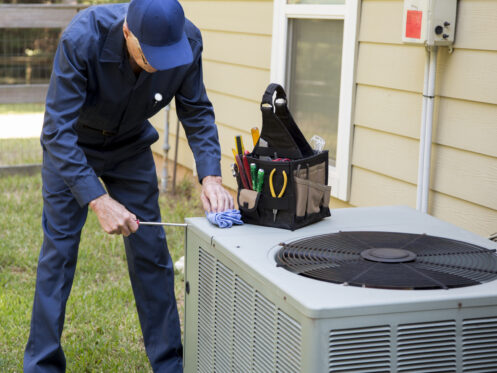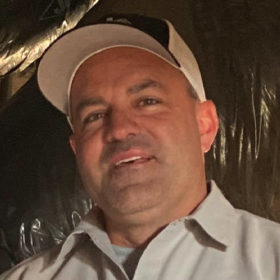An air conditioner that fails to start can be a serious inconvenience, especially during the height of summer when maintaining a comfortable home is crucial. Understanding some of the most common reasons your cooling system may not be turning on can help you restore comfort to your home more quickly. By identifying potential issues early, you can often resolve them or know when it’s time to call a professional, ensuring your air conditioner runs when you need it most.
Check the Thermostat
If your air conditioner is not turning on, you should first check your thermostat’s settings. Make sure the thermostat is in the “cool” mode and set it lower than the room temperature. Making a small adjustment or returning the thermostat to its factory settings might fix the problem. Also, check to see if the thermostat’s batteries are dead. Some digital and programable thermostats are not hardwired to your home’s electrical system and will not function without battery power.
Alternatively, if your cooling system doesn’t kick on when your house reaches the temperature you set, the thermostat may need to be recalibrated. You can check its accuracy by taping a reliable thermometer to the wall next to it. Wait 15 minutes, and then, compare the readings. If the readings are within a few degrees of each other, your thermostat is reading your indoor temperature correctly. However, if the reading on the thermostat is much lower than your home’s actual temperature, your air conditioning won’t turn on when it is supposed to. In this case, you will have to contact a professional to recalibrate it.
Check the Circuit Breaker
Another possible reason your air conditioner is not turning on is that the circuit breaker tripped. Most central air conditioners are on a dedicated circuit within your electrical system. To check the breaker, go to your electric panel. If the switch for your cooling system is in the off position, flip it on to see if it fixes the problem. Keep in mind that a circuit breaker that keeps tripping is an indication of a more serious underlying problem. It could indicate an electrical issue within your cooling system or your home’s wiring.
Look for Tripped Fuses
Many air conditioning systems are equipped with fuses to protect sensitive electrical components from damage. If one of these fuses blows, your air conditioner may not turn on. Check the fuses for any that appear burned out or discolored. If you find a blown fuse, replace it with a new one with the same amperage rating to restore power safely.
However, if you notice that fuses keep blowing, it could indicate a deeper electrical issue that requires professional attention. They can diagnose the root cause, whether it’s faulty wiring, an overloaded circuit, or another hidden problem.
Assess the Air Filter
Your cooling system’s air filter prevents dirt and debris from damaging the internal components of your air conditioner. It also plays a role in maintaining indoor air quality by capturing airborne contaminants that would otherwise recirculate through your living spaces. However, if it becomes clogged, it will reduce airflow to the system and cause your air conditioner to overheat. Most air conditioners have a thermal overload switch that prevents the system from running if it gets too hot.
After changing an air filter due to your air conditioner overheating, it’s generally recommended that you wait about 30 minutes before restarting the system. This gives the air conditioner’s internal components, including the compressor, time to cool down and reset.
You can prevent this issue from happening again by changing your HVAC filter regularly. Experts suggest replacing it at least every three months. However, you may have to change out filters more often based on factors like how many people live in your house and if you have pets. Many homeowners check their air conditioner’s filter once a month to ensure they know when it needs attention.
Inspect the Condenser Unit
Another issue that may be causing an airflow issue is an obstructed outdoor condenser unit. Keep the area around the unit clear of anything that could restrict airflow. You may need to trim bushes or trees; the condenser needs at least three feet of clearance on all sides. In addition, regularly clear any leaves or other debris out of the vents on the outside cover.
Check the Capacitor
If your outdoor condenser is making a buzzing noise but no cold air is coming from your vents, the problem might be a faulty capacitor. The capacitor plays a crucial role in your air conditioner by storing energy and supplying the initial jolt needed to start the compressor and fan. When the capacitor is defective, the AC unit may struggle to start or might not power on at all.
Signs of a damaged capacitor include bulging, leaking, or corrosion on its exterior. You can check the capacitor’s functionality with a multimeter, but this can be tricky if you’re unfamiliar with electrical work. For safety reasons and to avoid further damage to the system, it’s advisable to leave capacitor testing and replacement to a licensed HVAC professional.
Low Refrigerant Level
Every air conditioner needs refrigerant to work properly. If the refrigerant level is too low, the system will not switch on or will run inefficiently. If you hear hissing or see damp spots around the cooling system’s tubing, it could be a symptom of a refrigerant leak. Because of the specific tools and expertise needed, refrigerant recharge and leak repairs are best left to trained professionals.
Inspect the Wiring and Connections
A problem with your air conditioner’s wiring can render it inoperable. When checking the wiring, look for signs of fraying, loose connections, or other indications of deterioration. For any issues you discover, contact a licensed HVAC specialist, as these repairs can be hazardous and require professional expertise. An expert will ensure that all electrical connections are well-insulated and securely fastened.
Check for a Clogged Drain Line
Your air conditioner removes moisture from your home’s air as part of the cooling process. This moisture collects in a drain pan and travels outside or into your home’s drainage system through a condensate line. If this line becomes clogged, water will build up in the system and trip the float switch. To get your air conditioning running again, you will have to contact a technician to disassemble your cooling system and clean or replace the drain line.
Tripped High-Pressure Switch
When refrigerant pressure rises above safe levels, the high-pressure switch automatically shuts down your air conditioner to prevent harm. Some common issues that cause high pressure are an overcharged system or a clogged condenser coil.
Resolving this issue involves identifying and addressing the underlying cause of the high pressure. Common fixes include cleaning the condenser coils to improve airflow or adjusting refrigerant levels if they are too high. After correcting the problem, a professional will reset the high-pressure switch, and you can continue using your cooling system.
Contact the Local Experts
At Cozy Home Services, we have served the residents of Vacaville, CA, and the surrounding areas for years. We install, maintain, and repair heating and cooling systems. Additionally, we can help with all your plumbing and electrical needs. Contact us today to schedule an AC repair appointment with one of our knowledgeable team members.



